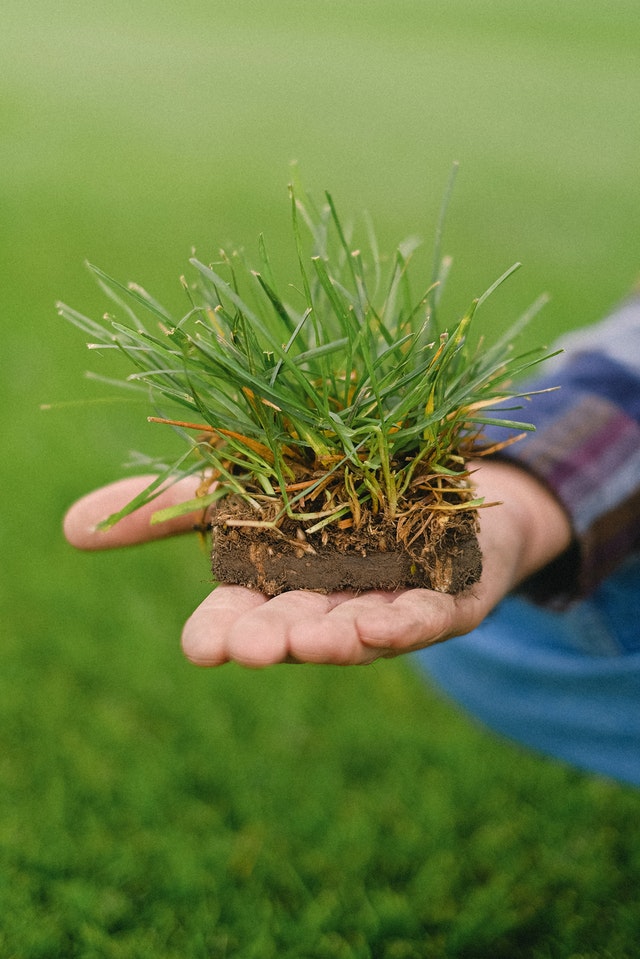Having a lawn that is green and luscious is everyone’s dream. You can plant grass seed to grow healthy, thick grass in your garden, but it is good to know the best conditions for growing this seed before starting. One of them being can grass seed grow properly in hard soil?
It is challenging for grass seeds to grow in hard, compacted soil. Preparing the ground, aerating, tilling, and adding nutrients are essential before planting grass seed. Make sure that the grass seed selected can withstand the hard soil to have a healthy lawn.
What is good to look at if you have soil that is a bit too hard is what seeds will grow nicely in it and how to get the ground ready for planting. Let’s help you get your garden to the beautiful, healthy standard you have been dreaming of.
Quick Links
Can Grass Seed Grow In Hard, Compacted Soil?
It is entirely normal to have some sections of your garden that are not completely healthy as other sections even though you provide it with the same care. One of the reasons why these sections may not be too healthy is because of hard compacted soil.

This highly compacted soil can be caused by either a high clay content, neglect, or a lot of traffic over the area. Knowing the reason why you have compacted soil can help you fix it. The hard ground has tightly pressed soil particles that have a low amount of air, nutrients, and water in the soil needed for grass growth.
The grassroots need air to grow and stay healthy, so hard soil isn’t the best for grass to grow in. Whether the reason for your compacted soil is because of clay or lots of traffic, once it is prepped for seed, it will be great to grow grass seed.
This is because clay soil can contain a lot of nutrients and water needed for a healthy lawn. It’s good to know how to prepare your hard soil so that your grass seeds have the best chance of growing; it is also helpful to know what seeds are best for this soil.
What Are The Best Type Of Seeds For Hard Soil?
If you know that this soil can easily compact and become hard, it may be good to choose the correct grass seed that can survive harsher conditions. We will look at the seed that can withstand poor clay soil that can become hard and high traffic areas.
- Tall fescue – this grass seed has a trafficker that prevents the seed from being washed away. It also grows well in poor clay soil; it can survive heat and drought.
- Buffalo grass – this grass grows well in clay soil and is low-maintenance. It is hardy and can withstand seasons of drought.
- Bermuda grass – this grass grows quickly and will give you a thick green lawn easily. Its root system grows deeper, allowing it to survive poor clay soil.
- Scott’s turf builder – this grass seed grows well in clay soil and can withstand hot and dry conditions.
- Zoysia grass seed – this seed can survive severe heat and drought
- Kentucky bluegrass – this grass seed is good to plant in high-traffic areas.
- Perennial ryegrass – this grass seed needs low maintenance and can survive hardy conditions.
- Pennington Smart Seed Dense Shade – this grass seed can withstand hardy conditions and grows will is hard soil.
There is a better chance of having a thick, green lawn with these grass seeds in areas where the soil is hard, not as healthy, and aerated as you would like it to be.
How To Prep The Hard Soil To Plant Seeds
A few things can be done to improve your hard compacted soil to healthier soil where you can plant grass seeds. These tips will help guarantee the grass will grow as the ground will have more nutrients, oxygen, and water. Let us look at the steps to healthier soil.
Test your soil
This is an important step not only for compacted soil but any soil where you want to plant seeds. This will ensure that the soil has all the required nutrients to grow healthy plants and grass.
Collect soil from about ten places in your garden that may have hard soil; make sure you collect dirt that is 3 inches deep. Mix the soil and send it off for testing; this test will tell you what nutrients your soil lacks and has an abundance of.
Aerate and till your soil
You can aerate the soil with a particular machine that helps pierce tiny holes into the soil to absorb oxygen and water. This will loosen the soil particles allowing air and oxygen to fill the soil.
Till the soil
You can use a rototiller to till the soil; this will loosen the soil even more; make sure you till to a depth of 6 to 18 inches. This helps loosen the soil to allow nutrients and water to be added effectively to promote seed growth. Once this is done, you can add either fertilizer or compost to the ground to add the relevant nutrients; you can decide what to add once you have received your soil test back.
Select and plant the grass seed
Make sure you select the correct plant seed that will thrive in your soils conditions, look at the ones discussed above. Once you have planted the seed, apply topsoil on the surface, water it properly, and leave it to grow.
Wrapping Up
It is difficult for grass seeds to grow in hard soil; this is because the soil has fewer nutrients, oxygen, and water needed for seed growth. Preparing the soil before planting grass seed; is done by aerating, tilling, and adding compost or fertilizer.
Once the soil is ready, it is essential to plant the correct type of grass seed. You don’t want to add a species that can’t have hardy conditions. It is best to choose one that can grow in poor clay soil and withstand heat and drought.

Kevin is the owner of Land Lawn & Garden. In addition to taking a lot of pride in his lawn at home, he also helps manage the family land. You can find more about him here.

